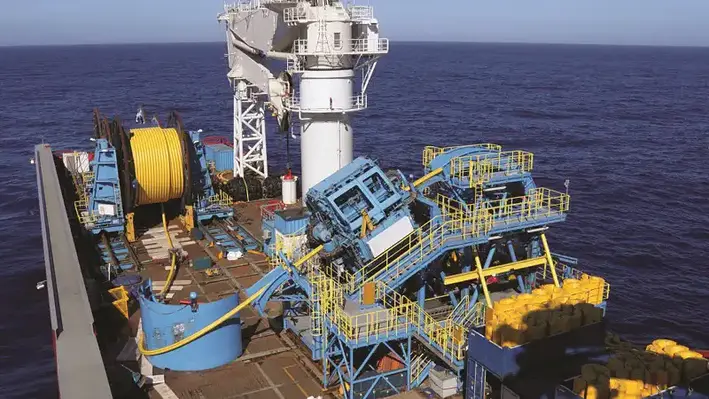
 Energy technology company Baker Hughes has announced a joint technology development programme with Petrobras to provide a solution for stress corrosion cracking in flexible pipelines.
Energy technology company Baker Hughes has announced a joint technology development programme with Petrobras to provide a solution for stress corrosion cracking in flexible pipelines.
The agreement encompasses development and testing, as well as a purchase option for the next-gen flexible pipes, which will have an extended service life of 30 years in high CO2 environments. The collaborative effort between both companies will be primarily executed in Baker Hughes’ Rio de Janeiro Energy Technology Innovation Center and nearby pipe systems manufacturing plant.
Stress corrosion cracking due to CO2 (SCC-CO2) was identified in 2016 and has an effect on flexible pipes in pre-salt fields, which have a high concentration of naturally occurring CO2. If water penetrates a pipe’s annulus area, the corrosion to steel reinforcement layers can weaken structural integrity. This issue is particularly apparent in Brazil’s pre-salt fields, where Petrobras is reinjecting CO2 from its production operations into wells to enhance oil recovery.
Amerino Gatti, Executive Vice President, Oilfield Services & Equipment at Baker Hughes, said, “Baker Hughes has led the way in addressing SCC-CO2, and we will bring that expertise and experience to bear in developing the definitive solution to this critical industry challenge. By deploying flexible pipe systems that last for decades, Petrobras can more efficiently unlock the vital natural resources that power the region, while also safely returning CO2 deep underground.”
Until now, operators in high-CO2 environments have relied on solutions that mitigate the impact of SCC-CO2 while limiting the service life of risers and flowlines. Baker Hughes’ flexible pipe systems and advanced monitoring technologies have proven effective at minimising this impact and the company is a major supplier of flexible pipelines to Petrobras.
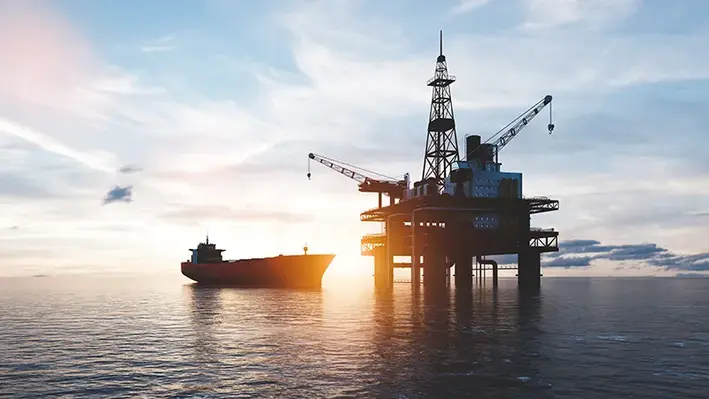
 First oil from the Mero Field in the Santos Basin is expected in the second half of the year with the arrival of SBM Offshore's Alexandre de Gusmao floating production storage and offloading (FPSO) vessel.
First oil from the Mero Field in the Santos Basin is expected in the second half of the year with the arrival of SBM Offshore's Alexandre de Gusmao floating production storage and offloading (FPSO) vessel.
This follows the recent arrival of FPSO Almirante Tamandare, which began production on 15 February, as a part of Petrobras fleet.
Alexandre de Gusmao is SBM Offshore's ninth FPSO vessel in Brazilian waters. It boasts a production capacity of 180,000 barrels of oil per day and 12 million cubic meters of gas per day.
SBM Offshore deals with FPSO vessels with production capacities ranging from 150,000 bpod to 250,000 bpod. It can convert oil tankers or very large crude carriers (VLCCs) into FPSOs. It has overall 15 units, deployed mainly in the Latin America region other than in West Africa. Its Fast4Ward offering focuses on risk mitigation and quality enhancement with the help of digital solutions.
"This achievement is a testament to the hard work and dedication of our teams, who have worked tirelessly to bring this project to fruition. The addition of this vessel to our fleet marks a significant milestone in our operations and reinforces our commitment to excellence and innovation in the sector. Welcome to the fleet, FPSO Alexandre de Gusmao," said Bruno Giusti, Brazil Operations Director at SBM Offshore.
Through inspection maintenance and repair, the company has covered services such as the designing, supply, installation, operation and life extension of the FPSO vessels.
To know more about Latin America's offshore well intervention scene, click here.
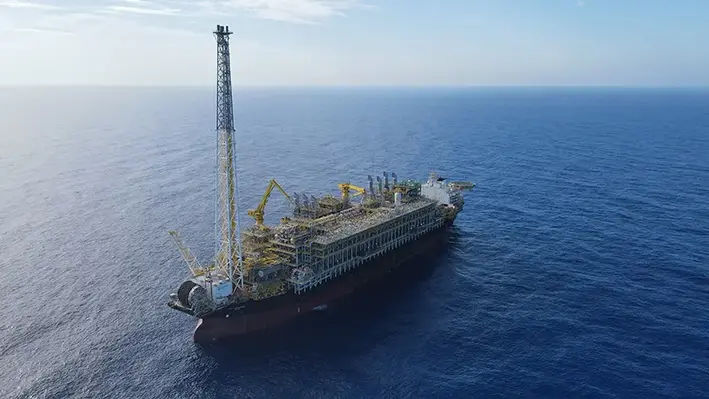

Production at Brazil’s Mero field is set to ramp up with the arrival of SBM Offshore’s FPSO Alexandre de Gusmão.
The FPSO, which has a production capacity of 180,000 barrels of oil (BOPD) per day and gas compression of 12mn cubic metres per day, left China for Brazil in December. It is scheduled to spend 22.5 years in the country according to the terms of a lease and operation contract with Petrobras signed in 2021. Alexandre de Gusmão will be the fifth FPSO unit operating at Mero, joining Pioneiro de Libra, Guanabara, Sepetiba, and Marechal Duque de Caxias. The addition of the new FPSO is expected to boost the field’s production capacity to 770,000 bopd.
The Mero field, located in ultra-deep waters (2,100 m) approximately 190 km off the coast of Rio de Janeiro in the pre-salt layer of the Santos Basin, reached the milestone of 500,000 barrels of oil produced daily on 28 February. Discovered in 2010, Mero is governed by the Libra Production Sharing Contract, operated by Petrobras (38.6%), in partnership with Shell Brasil (19.3%), TotalEnergies (19.3%), CNOOC (9.65%), CNPC (9.65%) and Pré-Sal Petróleo SA (PPSA) (3.5%), which, in addition to managing the contract, acts as the Union’s representative in the non-contracted area (3.5%). The pre-salt currently accounts for 81% of Petrobras’ total production.
"Since extracting its first oil, Mero’s production has been marked by technological advances, innovation and production records. The 500,000 barrels per day mark is the result of the work of several areas and the new technologies used in our projects and in our day-to-day operations. The company remains committed to operating sustainably, optimising production in existing fields and, in doing so, helping to provide the energy needed for the country’s development," said Magda Chambriard, CEO of Petrobras.
"Mero is the third largest field in Brazil and, in terms of volume of oil in place and production, is behind only Tupi and Búzios, also located in the Santos Basin pre-salt. And production will increase even further with the completion of the ramp-up of the FPSO Marechal Duque de Caxias and the start-up of the FPSO Alexandre de Gusmão. We have invested heavily in technological development, which allows us to increase productivity while minimising greenhouse gas emissions, with safety and integrity of the facilities," said Sylvia Anjos, Petrobras’ Exploration and Production Director.
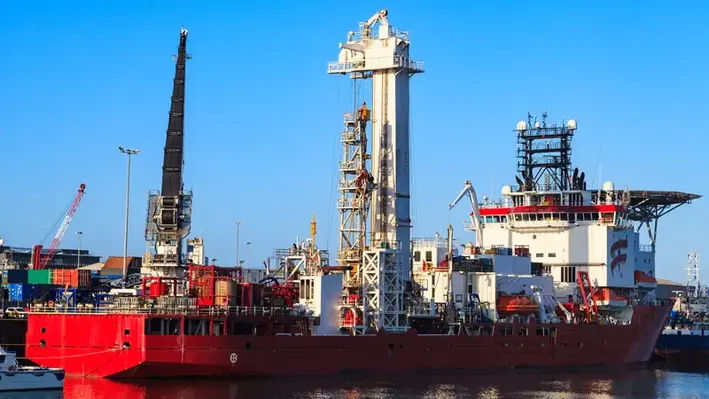
 A technical hiccup in the Bauna floating production storage and offloading (FPSO) vessel deployed in the Santos Basin offshore Brazil has cost exploration and production company, Karoon Energy, about 10 days of production shut in, resulting in 4% lower yeild in the fourth quarter of 2024, when compared to the previous quarter.
A technical hiccup in the Bauna floating production storage and offloading (FPSO) vessel deployed in the Santos Basin offshore Brazil has cost exploration and production company, Karoon Energy, about 10 days of production shut in, resulting in 4% lower yeild in the fourth quarter of 2024, when compared to the previous quarter.
This was triggered by the failure of two of the 16 FPSO mooring anchor chains, which is currently being addressed by Karoon and the FPSO operator, Altera & Ocyan (A&O), as the team tries to figure out the root cause behind the failure and identify ways to mitigate the risks of recurrence. Karoon is considering acquiring the FPSO for a smoother monitoring of the vessel, and is in talks with A&O to gauge the feasability of the plan.
"Longer term, given the significance of the FPSO to our operations, we see measurable operational and economic advantages in having direct control over the vessel. The company is in negotiations to acquire the FPSO from the current owner and operator, A&O, subject to finalising terms. Further details will be provided if and when a binding agreement is reached," said Julian Fowles, the Chief Executive Officer and Managing Director of Karoon.
Achieving around 95% FPSO efficiency has also been a roadblock for Karoon as it remained low by atleast a 10% for 2024. To boost performance reliability, Karoon will soon be initiating a flotel-supported maintenance campaign on the vessel following the acquisition of relevant regulatory approvals. This floating hotel moored by the FPSO has been contracted to accommodate extra
manpower for a planned maintenance programme to methodically eliminate maintenance backlog so that equipment redundancy on the FPSO can be attained. The entire campaign might span across a period of two months, requiring the FPSO to remain non operational for at least 30 days. The company is expecting the Bauna FPSO to attain monthly efficiency of 88-92% (excluding shutdowns) in this year.
"While the Bauna Project production is starting to benefit from the work completed to clear the most production-critical maintenance issues, FPSO efficiency in CY24 was 84.5%, well below our long term expectations of 90-95%. A key focus in 2025 will be to increase FPSO efficiency towards that goal. The first step, a flotel-supported campaign to substantially reduce the maintenance backlog and improve equipment redundancy, is expected to commence shortly, once remaining regulatory approvals are received," said Fowles.
Karoon has also secured a vessel to conduct well intervention activities in SPS-88 in Bauna within the first half of the year so that it can be brought back onstream before mid-year. Fowles believes this to be a crucial step, alongside the flotel-supported maintenance campaign, in 'the reinstatement of production from SPS-88, which we expect back online at rates of 2,000 – 2,500 bopd before mid-year, is expected to help mitigate natural decline in 2025'.
A lightweight well intervention vessel will be deployed to replace the faulty gas lift valve in the SPS-88 completion string. The relevant approvals and necessary support vessels have been put in place for the intervention activities to begin.
To know more about the global well intervention scene, click here.
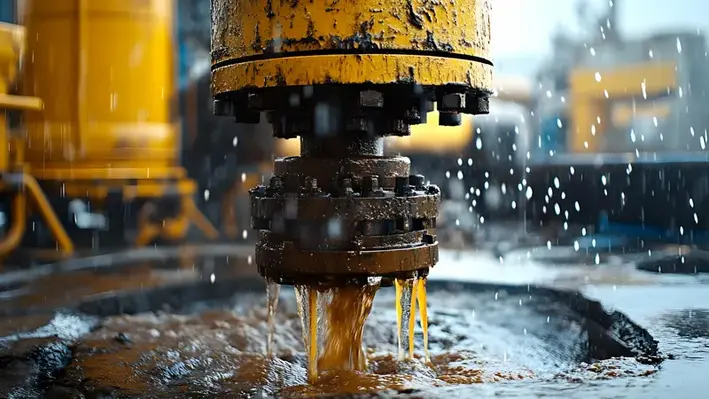
 Following a competitive process, Halliburton has been onboarded by Petrobras for integrated drilling services across several offshore fields in Brazil.
Following a competitive process, Halliburton has been onboarded by Petrobras for integrated drilling services across several offshore fields in Brazil.
Set to begin in 2025, the scope of the contract includes drilling services for development and exploration wells that will continue for a period of three years.
The contract enables Halliburton to provide iCruise intelligent rotary steerable system (RSS) to reduce well time and place wells accurately, and LOGIXTM automation and remote operations platform to improve well construction consistency and performance. The model also covers ultra-deep resistivity service, EarthStar, to position production boreholes and map reservoirs.
The iCruise RSS is known for its fast drilling and tripping time, besides quicker casing drillouts. This model brings predictability to an operator's schedule as it maintains precision of steering capabilities, while reliably reaching total depth, targetting longer wells.
LOGIX is a curation of subsurface and surface automation, digital twins, and remote operations; a one-stop solution for consistent well construction operations. Its wide-ranging advanced digital applications that synchronates design applications, rig control systems, remote operations, and downhole tools, enable critical engineering, operations insights, and automated operations.
The logging-while-drilling (LWD) technology that is EarthStar can interpret reservoir formations and fluid boundaries up to 225 feet (68 meters) around the wellbore. This lets operators position production boreholes accurately while mapping large volumes of the reservoir. Its 3D inversion feature gives subsurface insights in real-time, depicting a vivid image of the geology and fluids in place in three dimensions for better placement decisions.
To address the technical limits of drilling fluids in offshore areas, Halliburton will deploy its BaraLogix real-time service to reduce lost time through advanced hydraulic software, surface measurement automation, and predictive analytics. BaraLogix operates alongside rig sensors to help specialists, drilling engineers, company men, field service representatives, and technical professionals. The tool identifies challenges such as downhole pressure or hole cleaning, and guides the personnel accordingly so as to reduce well construction time. It brings together advanced hydraulic software, surface measurement automation, and predictive analytics, ensuring data accuracy for fool-proof decision making.
The company will also utilise several other exclusive technologies such as Cerebro in-bit sensing and introduce innovative solutions such as the Reservoir Xaminer formation testing service. This service detects structural reservoir complexities and drives more informed decisions in drilling, completion, and production.
Cerebro in-bit sensors help improve drilling efficiency by enhancing bit design, bottom hole assembly and parameter selection. The tool provides in-bit measurements of vibration and rotation speed, forming the basis for advanced bit design, boosting drilling efficiency with a better rate of penetration and run length for a smooth and cost-effective drilling process.
"This contract demonstrates Halliburton’s strength in deep and ultra-deep offshore drilling and well construction," said Waldomiro Mendes, Halliburton's Senior Area Manager for Brazil.
Halliburton considers this its largest service contract with Petrobras, which significantly expands its drilling services footprint in the pre-salt and post-salt areas for both development and exploration wells.
To know more about the global well intervention scene, click here.
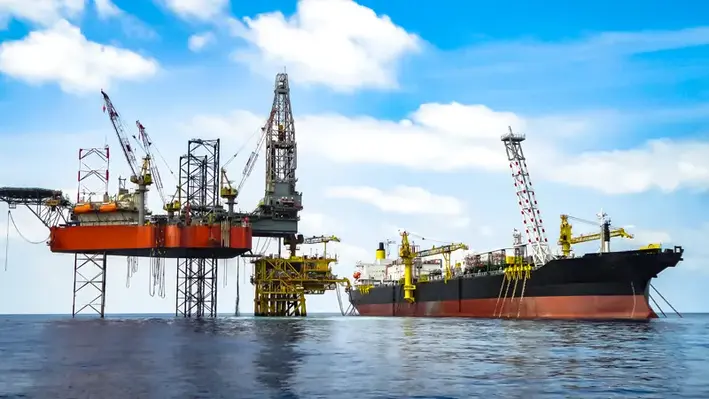
 Baker Hughes has been awarded a multi-year contract from ExxonMobil Guyana to provide specialty chemicals and related services for its Uaru and Whiptail offshore greenfield developments in Guyana’s Stabroek Block, one of the most prolific oil discoveries of recent years.
Baker Hughes has been awarded a multi-year contract from ExxonMobil Guyana to provide specialty chemicals and related services for its Uaru and Whiptail offshore greenfield developments in Guyana’s Stabroek Block, one of the most prolific oil discoveries of recent years.
The contract includes all topsides, subsea, water injection and utility chemicals for the Errea Wittu and Jaguar FPSO vessels, which are currently under development, and are targeted to begin production in 2026 and 2027 respectively. Baker Hughes has established local supply chains to create a reliable and efficient source of chemicals to address the unique needs of these developments.
Uaru and Whiptail are ExxonMobil Guyana’s fifth and sixth projects in the country, where it has been producing oil for more than five years. The two developments will include up to 20 drill centres and 92 production and injection wells. Each FPSO will have a capacity of 250,000 barrels per day, bringing the country’s total daily production capacity to approximately 1.3mn bbl. According to its recently-released 2024 results, Exxon Mobil achieved record production in Guyana last year.
Since “first oil” at the offshore Liza Phase 1 project five years ago, Guyana is now the third largest per capital oil producer in the world and is seeing its offshore sector expand rapidly, which in turn is spurring significant economic growth in the country.
Baker Hughes has a strong history of localisation in Guyana, opening a multimodal supercenter in Georgetown in 2022. The company also provides a variety of services and equipment to operators in the country, including turbomachinery for ExxonMobil Guyana’s FPSO fleet and production chemicals for the Liza Unity vessel.
“ExxonMobil Guyana and Baker Hughes share a long history of supporting Guyana’s energy sector, and we look forward to working together to write its next chapter,” said Amerino Gatti, Executive Vice President, Oilfield Services & Equipment at Baker Hughes. “Our experience operating across the country’s energy supply chain and unmatched expertise in oilfield and industrial chemicals make Baker Hughes uniquely suited to support complex FPSO operations such as these.”
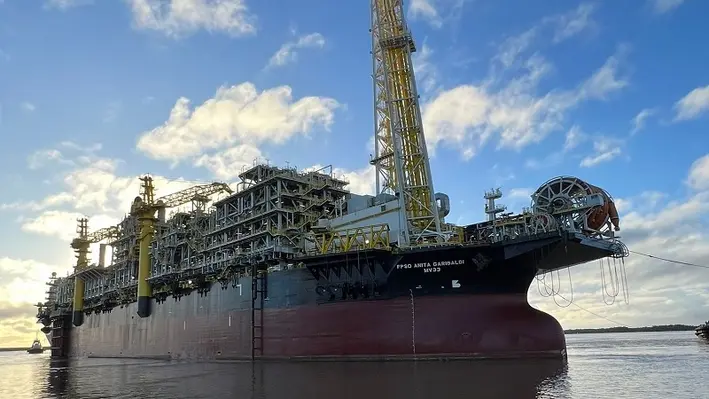
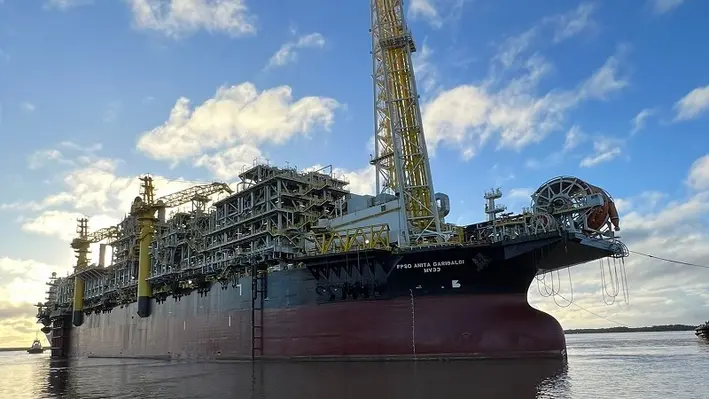 It was a widely successful 2024 for Petrobras as the Brazilian operator has reported it has achieved all of its production targets that were established in the 2024-2028+ Strategic Plan.
It was a widely successful 2024 for Petrobras as the Brazilian operator has reported it has achieved all of its production targets that were established in the 2024-2028+ Strategic Plan.
In total, oil and natural gas production reached 2.7 million barrels of oil equivalent (boed). Commercial oil and natural gas production reached 2.4 million boed and oil production was reported at 2.2 million barrels per day.
The operator set a new annual record for total own and operated production in the pre-salt, with 2.2 million boed and 3.2 million boed respectively, equating to 81% of the company’s total production.
Petrobras made significant headway in 2024, with one note-worthy project including the start-up of two new platforms: the FPSO Maria Quitéria, located in the Jubarte field in the Campos Basin; and the FPSO Marechal Duque de Caxias in the Mero field located in the Santos Basin pre-salt layer.
During the year, the FPSO Sepetiba platform, in the Mero field, reached its maximum oil production capacity after eight months of operation. The ramp-up of FPSO platforms partially offset the losses resulting from maintenance shutdowns and the decline in mature fields in addition to the impact on production due to unscheduled shutdowns determined by the ANP and the effects of the Ibama strike.
Another significant milestone of the year was the start of commercial operations of the Natural Gas Processing Unit (UPGN), located in the Boaventura Energy Complex, in November which has the capacity to process 10.5 million m3/day of gas through its first module.
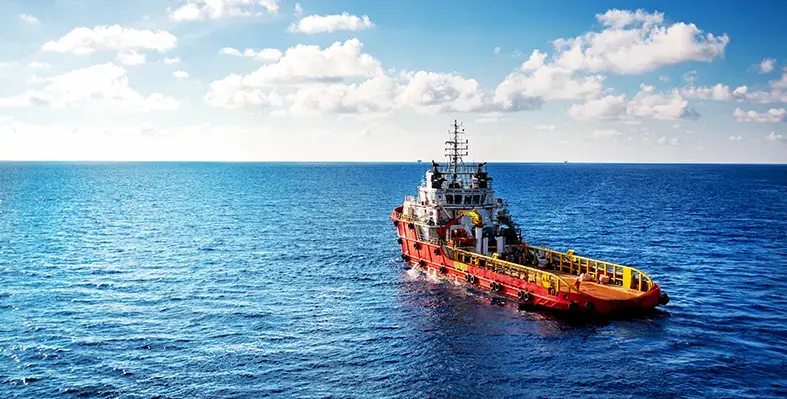
 Helix's Q7000 purpose-built DP3 semi-submersible vessel will undergo hull clearance among other maintenance activities at Namibia’s Port of Walvis Bay before it is all set to start for delivering a decommissioning contract off the coast of Brazil as agreed with Shell in 2022
Helix's Q7000 purpose-built DP3 semi-submersible vessel will undergo hull clearance among other maintenance activities at Namibia’s Port of Walvis Bay before it is all set to start for delivering a decommissioning contract off the coast of Brazil as agreed with Shell in 2022
The year-long contract also mandates plug and abandonment services at the Bijupira and Salema fields in Brazil’s Campos Basin.
It will take an estimated 10 days – that will also involve the removal of maring growth from the pontoons – to have the vessel prepared for operations offshore Brazil.
Helix's Q7000 vessel that was built in 2019 is equipped for riser-based subsea well intervention and decommissioning operations. With a capacity to withstand harsh environmental conditions, the unit supports production enhancement operations, well-cleanup, and field development. With a variable deck load capacity of about 3,000 metric tons besides well intervention and service fluids, Q7000 can support a crew of as many as 140 people.
The upper deck has a 600-metric-ton well intervention tower with active and passive heave compensation, and a skidding system for well intervention support equipment and tubular storage make up the large flush deck. The below deck comprises twin work-class ROV systems, bulk fluid storage, and pumping systems.
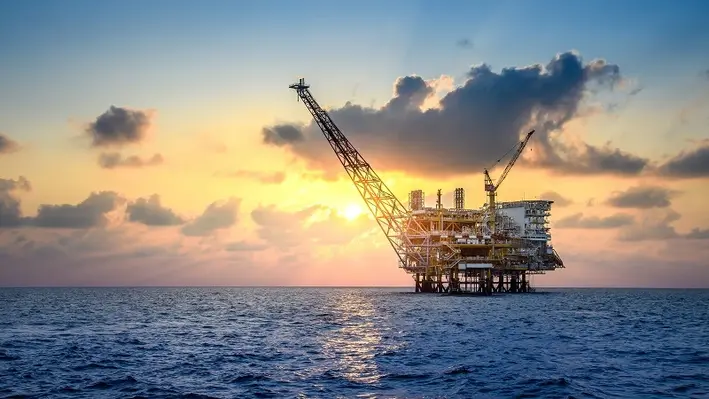
 Over the past few years Latin America has positioned itself on the global stage as an emerging and critical industry across the well lifecycle that addresses the growing need to effectively and efficiently retire infrastructure once the well has reached end of life.
Over the past few years Latin America has positioned itself on the global stage as an emerging and critical industry across the well lifecycle that addresses the growing need to effectively and efficiently retire infrastructure once the well has reached end of life.
It has not been smooth sailing for the industry as the region has faced a series of complex challenges in light of the energy transition, however with environmental licenses by the Brazilian Institute of Environment and Renewable Natural Resources (IBAMA) becoming an integral factor in the materialisation of production interests and an overall increase in environmental awareness from across the industry, stakeholders and key industry players are embracing innovative well intervention methods and ensuring thorough end-of-life measures are in place.
Looking primarily at decommissioning and abandonment (D&A) the main drivers of the market within Latin America are the expiration of production licenses, the need to comply with evolving environmental regulations, and the region’s increasing push toward sustainability. As many oil and gas reserves in the region begin to mature, particularly in major oil-producing countries such as Brazil, Argentina, and Mexico, companies are facing the reality of retiring older, less profitable fields.
The decommissioning process involves safely dismantling infrastructure and restoring sites to environmentally sound conditions. This is becoming increasingly important as Latin American countries adopt stricter environmental laws and regulations.
Beyond regulatory requirements, the economic necessity of decommissioning older fields and facilities also plays a pivotal role. As operational costs rise for aging infrastructure, many companies are opting to decommission older assets to refocus their capital on newer, more productive fields. Furthermore, as the region transitions toward cleaner energy sources, companies and governments must address the legacy of fossil fuel infrastructure, making decommissioning an essential part of the energy transition.
Despite the growth of the D&A market, there are several challenges that the region faces. One of the most significant obstacles is the lack of sufficient funding for decommissioning projects. Decommissioning offshore platforms or dismantling pipelines requires substantial financial investment, and in many cases, the financial burden can often be too much for operators to bare. In countries where oil and gas revenues are a major part of the economy, this financial challenge can become even more complex, as the state often has to step in to fund decommissioning in cases where operators are unable to pay for the safe removal of infrastructure.
Another challenge is the scarcity of local expertise and technology required to carry out these tasks. While the oil and gas industry in Latin America has a skilled workforce, decommissioning often requires new, specific training that many countries have yet to provide in sufficient numbers.
Additionally, the market’s development is hindered by regulatory uncertainty. Some countries in Latin America have evolving or unclear regulations around decommissioning, which can complicate long-term planning and investment decisions.
Despite these challenges, the Latin American D&A market offers considerable opportunities. The region’s large and aging oil and gas infrastructure is a significant driver for decommissioning services. Countries like Brazil, Mexico, and Argentina offer substantial opportunities for international investment into D&A activities.
As the energy landscape shifts towards renewable energy, Latin American countries are emphasising sustainable decommissioning practices, focusing on environmental restoration, and waste management. This presents a chance for innovative solutions and technologies to be implemented on a wider scale.
International collaboration and partnerships are also becoming more common. Several multinational oilfield services companies, along with local firms, are forming joint ventures to navigate the region’s waters and overcome the financial challenges.

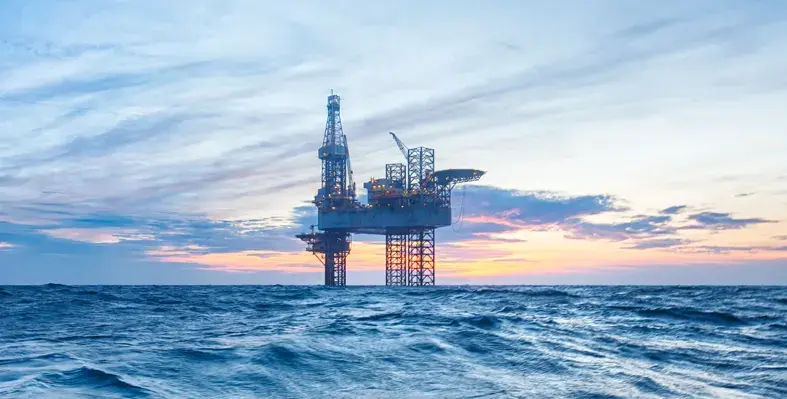
Interoil Exploration and Production ASA, a Norwegian-based exploration and production company with a focus on Latin America, has announced that its Colombian subsidiary has carried out a downhole intervention to the Vikingo well.
Interoil Colombia Exploration and Production (ICEP) successfully completed the project which included the installation of a jet pump with a modified operational configuration. In doing so, it raised production levels from 105 barrels of oil per day (bopd) up to an impressive 400 (bopd). Production is expected to stabilise at around 200 bopd and the intervention has also improved operational efficiency by reducing lifting costs with the new jet pump configuration.
“This intervention reaffirms Interoil’s confidence in the potential of our assets,” remarked Leandro Carbone, CEO of Interoil. “We are committed to maximising the value of our fields while creating lasting benefits for the local communities, our employees, and shareholders.”
The success of the project has been described by the company as a commitment to optimising production efficiency, extending the economic life of its assets, achieving social and environmental objectives, and exploring opportunities to expand its asset portfolio.
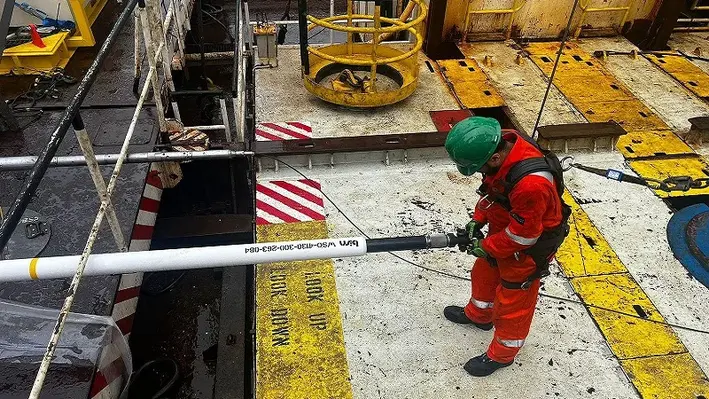

BiSN, a global provider of wel-lok sealing solutions, has achieved a remarkable milestone having reached 500 commercials deployments of its bismuth-based sealing technology.
The technology has now been deployed in more than 20 countries across the world, including in each of the major energy-producing regions having ticked off sites in North America, South America, UK & Europe, Africa, the Middle East, Asia, and Australia.
This new achievement comes off the back of another record setting period for the company, taking less than a year to achieve the last 100 deployments.
“With another year-on-year record of deployments, major operators around the globe are realising how effective wel-lok technology is for applications throughout the life cycle of a well, in addition to new industries,” remarked Paul Carragher, Founder and CEO of BiSN. “This year we have seen the first deployments in gas storage and carbon capture projects signalling new areas of growth and interest in our technology.”
According to the company, its commercial success has been significantly aided by its efforts to expand across the globe. Such an initiative has seen it open new facilities in Australia and Brazil in the last 12 months, which now work in tandem with the existing sites in Norway and Scotland.
Arild Stein, Senior Vice President of Research and Development, explained, “It is critical for BiSN to be where our clients are. The expansion strategy allows for the development of successful and lasting partnerships with operators, and to expand into new industries where our engineered sealing technology can be transformative.”
Despite the success, BiSN has made it clear that it has no intention to rest on its laurels but continues to refine and develop its wel-lok technology. Well suied for well intervention completion and P&A applications, the company is also targeting more use in additional activities such as around gas storage, hydrogen and carbon capture.
“Bismuth as a sealing material is particularly suited for the highly corrosive environment in CCS and gas storage projects,” surmised Stein “Bismuth alloy is impermeable and non-corrosive. We are very excited for this new growth area for BiSN and how it will enable the success of large-scale storage projects.”
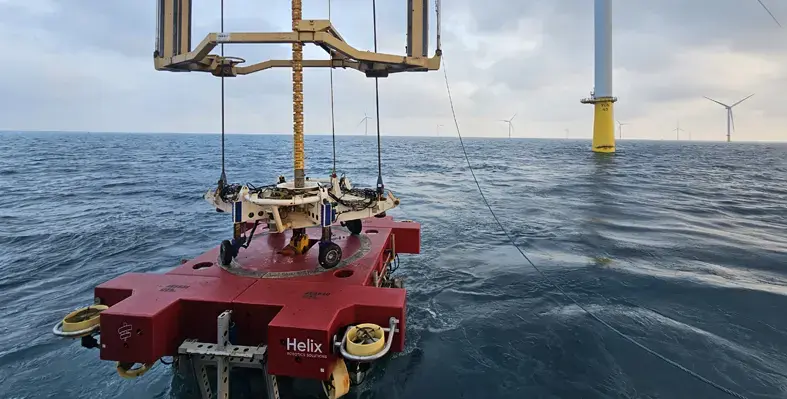
 Helix Energy Solutions Group has announced new three-year vessel charter and service contracts with Petrobras for the riser-based well intervention vessels Siem Helix 1 and Siem Helix 2 working offshore Brazil.
Helix Energy Solutions Group has announced new three-year vessel charter and service contracts with Petrobras for the riser-based well intervention vessels Siem Helix 1 and Siem Helix 2 working offshore Brazil.
Finalised following a competitive tender process, the new three-year contracts are valued in aggregate at an estimated US$786mn, in accordance with Petrobras’ estimated value.
The Siem Helix 2, since 2017, has been performing riser-based well intervention activities for Petrobras in the Santos and Campos Basins, and to date has completed more than 100 well interventions.
The Siem Helix 1 previously worked for Petrobras from April 2017 – July 2021 completing 74 well interventions in the Santos and Campos Basins.
Daniel Stuart, Helix’s Vice President-Commercial, said, “We have built a long and productive working relationship with Petrobras for the last seven years. During this time, we have consistently delivered safe and cost-effective well intervention services to the Brazilian market. These new three-year contracts underscore Helix's commitment to innovation, tailored solutions, and leveraging our extensive global well intervention expertise. These contracts reaffirm our Energy Transition business model, empowering clients to optimise production from their existing assets.”
The Siem Helix 1 and Siem Helix 2 are purpose-built, advanced well intervention vessels capable of performing a wide range of subsea services including production enhancement, well decommissioning, subsea installation, offshore crane and Remotely Operated Vehicle operations, offshore construction, and emergency response.
Page 4 of 10
Copyright © 2025 Offshore Network